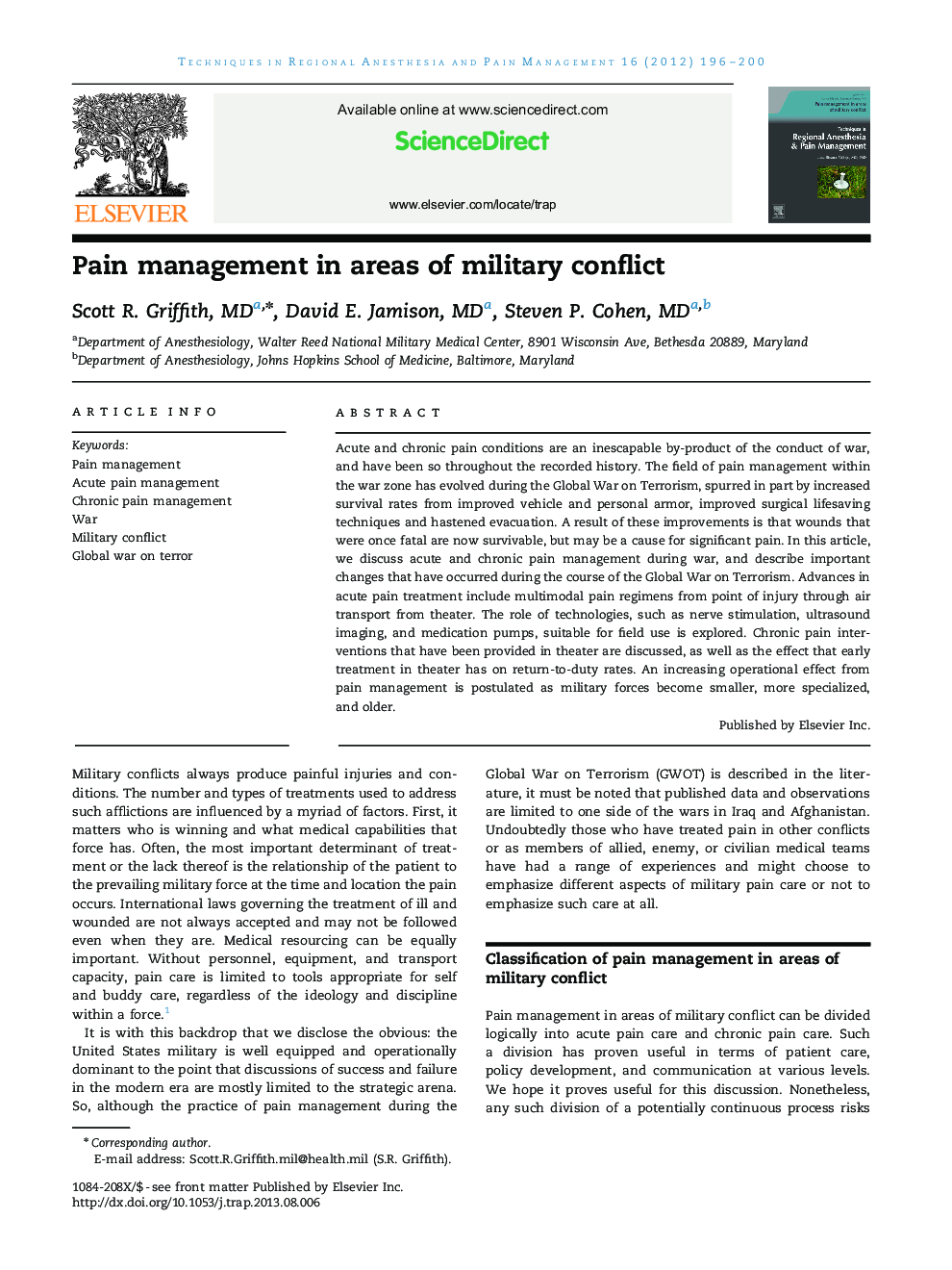| Article ID | Journal | Published Year | Pages | File Type |
|---|---|---|---|---|
| 2772162 | Techniques in Regional Anesthesia and Pain Management | 2012 | 5 Pages |
Acute and chronic pain conditions are an inescapable by-product of the conduct of war, and have been so throughout the recorded history. The field of pain management within the war zone has evolved during the Global War on Terrorism, spurred in part by increased survival rates from improved vehicle and personal armor, improved surgical lifesaving techniques and hastened evacuation. A result of these improvements is that wounds that were once fatal are now survivable, but may be a cause for significant pain. In this article, we discuss acute and chronic pain management during war, and describe important changes that have occurred during the course of the Global War on Terrorism. Advances in acute pain treatment include multimodal pain regimens from point of injury through air transport from theater. The role of technologies, such as nerve stimulation, ultrasound imaging, and medication pumps, suitable for field use is explored. Chronic pain interventions that have been provided in theater are discussed, as well as the effect that early treatment in theater has on return-to-duty rates. An increasing operational effect from pain management is postulated as military forces become smaller, more specialized, and older.
